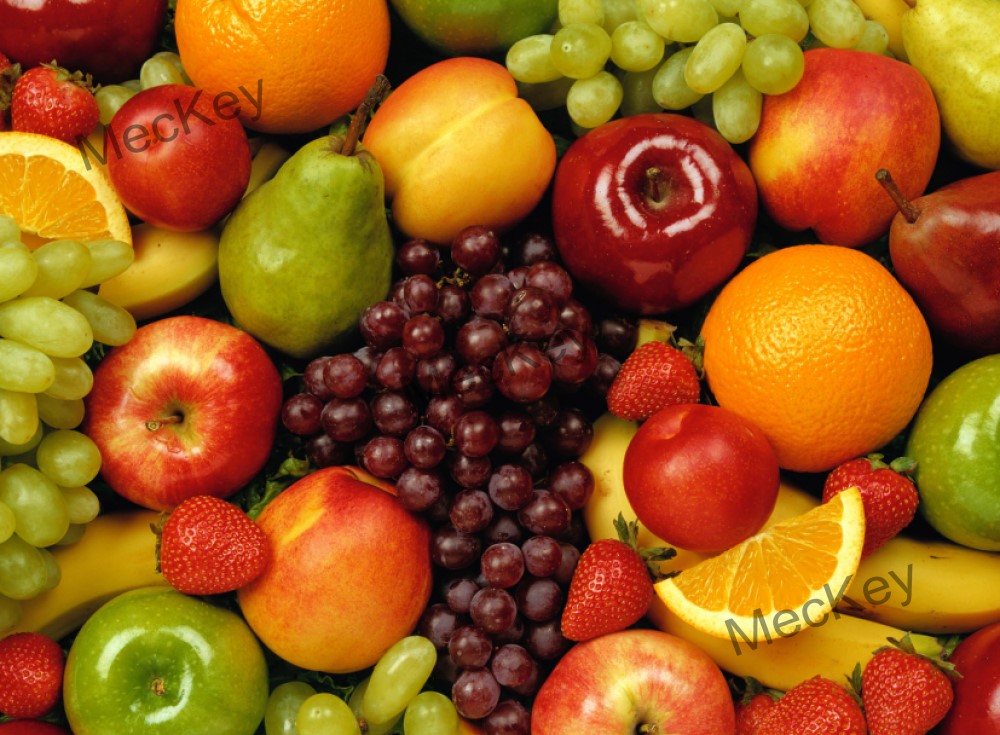Application of enzymes in fruit processing industry
Post on 2023-03-28
In the processing of fruits and vegetables, itsfresh taste and fruit juice taste are very important.

Due to the large amount of pectin, cellulose, hemicellulose, starch and pigment in fruit, the pulp has high viscosity, low press rate and is difficult to clarify.
Therefore, pectinase, cellulase, amylase and glucose oxidase are used to solve these problems in juice production.
The first application in the juice processing industry is pectinase. In 1930, American Z.J. Kertesz and German A. Mehlitz simultaneously established the process of clarifying apple juice with pectinase. Since then, the juice processing industry has developed into a high-tech industry.
Pectinase is the most important enzyme in fruit processing. Pectin exists in plants as a kind of intercellular filling material. It is composed of galacturonic acid and α- Most of the carboxyl groups (about 75%) of the chain-like polymers connected by 1,4 bonds are methylated, while pectin without methyl ester is called pectinic acid.
One of the characteristics of pectin is that it can form gel in the presence of acid and high concentration of sugar, which is the basis for the production of jelly, jam and other foods. However, in the processing of fruit juice, it causes difficulties
in the process of squeezing and clarifying.

Treatment of crushed fruit with pectinase can accelerate juice filtration and promote clarification. The global sales of commercial pectinase preparations account for about 1/4 of the sales of food enzyme preparations.
Pectinase is a complex group of enzymes, including:
1. Protopectinase: can make insoluble pectin in immature fruit soluble;
2. Pectin esterase (PE): hydrolyze pectin methyl ester into pectin acid;
3. polygalacturonase (PG): hydrolyzing polygalacturonase α- 1, 4 keys, divided into internal and external cutting;
4.Pectic acid lyase (PL): cut galactouronic acid from the inside or non-reducing end of pectinic acid α- 1,4 bond to form pectinic acid or unsaturated oligogalacturonic acid;
5. Pectin lyase (PNL): internally cut highly esterified pectin α- 1,4 bond to form methyl pectinate and unsaturated oligogalacturonic acid.
Pectinase widely exists in various microorganisms. The composition of pectinase produced by various microorganisms is different, and it is produced by Aspergillus niger, Aspergillus vini or Rhizopus in industry. The pectinase allowed to be added to food in China mainly comes from Aspergillus niger and Aspergillus oryzae.
Glucose oxidase can remove oxygen in fruit juice, beverages, canned food and dried fruit and vegetable products, prevent oxidation and deterioration of products, prevent microbial growth, and extend the shelf life of food; If the food itself does not contain glucose, glucose and enzyme can be added together, and glucose can be oxidized to gluconic acid by the action of enzyme, and the residual oxygen in the food can be removed at the same time. When fruit is frozen and stored, it is easy to cause fermentation deterioration due to the enzyme action of the fruit itself, and glucose oxidase can also be used to keep fresh.Lysozyme can prevent bacterial pollution and keep food fresh.
Enzymes are widely used in the processing of canned oranges. The mixture of hemicellulase, pectinase and cellulase produced by Aspergillus niger can be used to remove the coating of orange petals to replace the alkali treatment which consumes a lot of water and takes a lot of time.

The bitter substances in citrus fruits mainly include flavanone glycosides such as naringin and derivatives of triterpenoid compounds such as limonin, which are the main reasons for the bitter taste of citrus juice.
At present, the research focus on debittering of orange juice is enzymatic debittering. The bitter taste of limonin can be eliminated by citrininase treatment of cells immobilized by Arthrobacter globiformis.
Naringin scientific name naringin-7- β- D-glucose- α- L-rhamnose, which hydrolyzes and removes rhamnose in naringin molecule, becomes prunin, which is not bitter but slightly astringent, and removes glucose in prunin molecule to become tasteless naringin.
The inducible enzyme produced by Aspergillus niger has debittering effect, which is called naringinase β- Rhamnosidase and β- It is composed of glucosidase, which can be debittered after being added to orange juice at 30-40 ℃ for 1h; Alternatively, heat-resistant enzymes can be added to the can, and continue to play a debittering role in the can after pasteurization at 60 ℃.